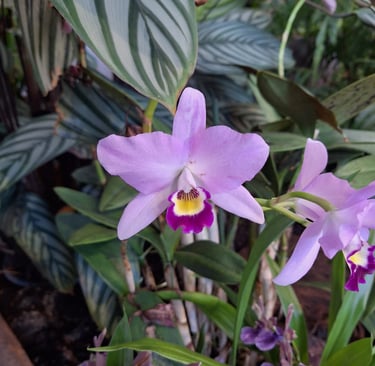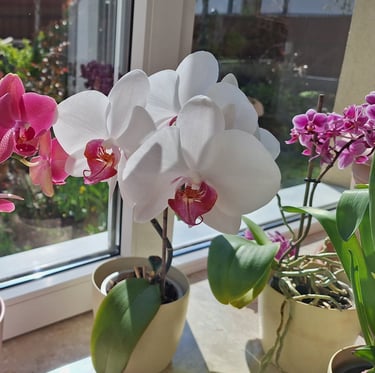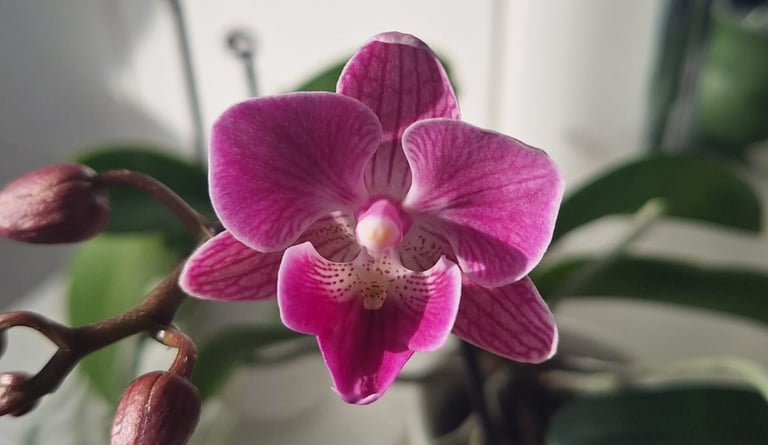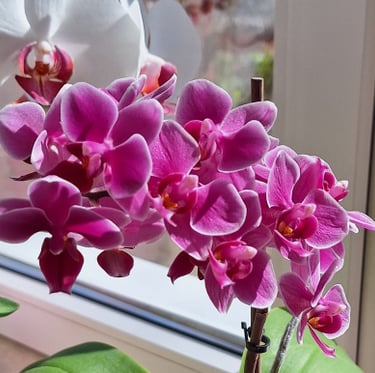How to Properly Grow Orchids Outdoors Step-by-Step
The best way to grow Orchids is to, provide much shade, ensure frequent watering, and protect them from extreme temperatures as most Orchids grow best in temperatures between 50-85°F (10-29°C).








Optimal Potting and Soil for Growing Orchids Outside
Select pots with excellent drainage and use an orchid-specific potting mix. Orchids don't like standard potting soil, unlike when you maintain other garden plants they need a mix that mimics their natural growing conditions, such as sphagnum moss or coconut husk.
Watering Orchids Like an Expert
Outdoor orchids may require more frequent watering than when watering indoor plants, especially during warmer months.
Water when the top inch of the potting medium feels dry. Ensure you do not leave standing water in the pot, as orchids are susceptible to root rot.


Fertilizing for Better Growth
It is best to feed your orchids with a balanced, water-soluble fertilizer diluted to half strength every other week during the growing season. Reduce feeding in the cooler months to prevent over-fertilization, which can harm the exotic flower.
Best Temperature and Humidity for Outdoor Orchids
While orchids enjoy warm weather, they need protection from extreme heat and cold. Most orchids prefer temperatures between 50-85°F (10-29°C). Increase humidity by misting the plants in the morning or placing a water tray nearby, but keep in mind when you care for flowers that not every bloomer likes high humidity.






How Do I Get My Outdoor Orchid to Bloom?
The best way to get your outside orchid to bloom is to provide a bunch of light, slightly cooler nighttime temperatures, and use a high-phosphorus fertilizer to encourage blooming.
What Orchids Are Easiest to Grow Outside?
The easiest orchids to grow outdoors are Cymbidium, Dendrobium and Oncidium varieties. These species are more tolerant of temperature variations and different light conditions.
What Should You Not Do With an Orchid?
Avoid overwatering, exposing them to direct sunlight, using standard potting soil, letting them sit in water, and subjecting them to cold drafts or extreme temperatures.





Protecting from Pests and Diseases
Regularly inspect your flowers for signs of pests or diseases of Orchids. Treat any issues promptly with appropriate organic or chemical treatments. Keeping the area clean and debris-free helps prevent problems.
Winter Care
In colder regions, bringing your orchids indoors or providing a greenhouse to protect them from freezing temperatures is one of the most important things about Orchid winter care. Some hardy varieties can withstand a light frost, but it's safer to err on the side of caution because Orchids usually are more summer flowers.






Sources
Nature and Sustainability uses only high-quality sources, including peer-reviewed studies to support the facts we describe in our articles. Please read our editorial policy to learn more about how we keep our content accurate, reliable, and trustworthy.
Growing orchids general information: Growing orchids for beginners - MSU Extension, The Best Orchid Care to Keep These Beautiful Plants Thriving (bhg.com)
Planting and repotting orchids: Planting Orchids: How to Repot an Orchid Plant (thespruce.com)
Fertilizing orchids: How to fertilize orchids - expert tips for healthy plants | (homesandgardens.com)
Best doil for orchids: How To Repot an Orchid at Home | Plant Care Tips | The Sill
Share this article:




Article By:
Calin has been in the garden industry for 5 years and knows a lot about gardening and plants. He owns this website and is responsible for most of the content.
Reviewed By:
Liviu Burileanu


Liviu is an expert gardener who has farmed and grown plants for 15 years. He likes houseplants and also knows cybersecurity like the back of his hand.


